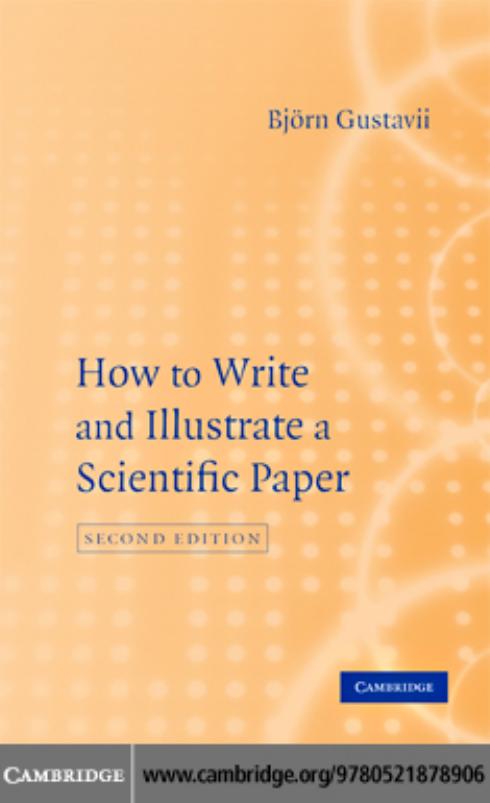How to Write and Illustrate a Scientific Paper by Bjorn Gustavii

Author:Bjorn Gustavii
Language: eng
Format: epub, pdf
Publisher: Cambridge University Press
The Harvard system – also called the name-and-year system
Accuracy of references and quotations
When I was a novice editor, I endeavored to evaluate personally the content of each submitted paper (in addition to the assessments made subsequently by referees). If I didn’t know the subject well enough, I marked the key citations in the reference list when reading the text and then tried to retrieve them.
I was surprised to find how often I was unable to track down an article. In some submitted papers as many as every second reference was untraceable by direct search. Through the journal’s volume index, however, I found some of them, but under the wrong year, wrong volume, or wrong page. Other errors found in retrieved publications included incorrect title, wrong author(s), misspelling of author’s name or, more seriously, misquoting of other authors’ results.
What can an author do to make citations more accurate? Most misquotations can be avoided by rereading the publications cited. Thus, never rely on memory alone! The number of errors can be reduced by checking and rechecking not only new references but also those lifted from your own computer bank of citations. Even references downloaded from MEDLINE can conceal errors! This means that you should always have a copy of the publications to be cited – at hand. (Some journals require that authors send, with the submitted paper, a photocopy of the first page of every reference listed!)
Quoting from another article is allowed only if the original publication is unavailable. However, citing a publication you have not seen can be hazardous, as the following illustrates. For nearly 50 years, several authors of English-language papers referred to a Dr. O. Uplavici (Dobbel 1938). He was assumed to be the author of a Czech-language article, reporting the first experiments in which amebic dysentery was transmitted from man to cat. Actually, “O úplavici” was the title of the paper and means “On dysentery.” The first author who cited the paper, Kartulis (1887), made the mistake. Hence, if you refer to a paper you have not read, say so:
Amebic dysentery was successfully transmitted from man to cat (Uplavici 1887, cited by Kartulis 1887).
Kartulis is thus held responsible for what he says Uplavici said. (The original article of “O úplavici” was written by Jaroslav Hlava 1887.)
Where you have a choice, avoid quoting sources that are not widely accessible; many books and most conference abstracts of meetings belong to this group. The citation of abstracts is particularly to be discouraged, as only about one-third of them lead to full-length, peer-reviewed articles (Liu 1996). Some journals no longer allow the citation of abstracts.
Your own author name
Decide early in your career the form in which you wish your name to appear. If you have a common name, it may be wise to use your middle initials in order to be distinguished from other scientists. If you are uncertain, make a search on MEDLINE to see whether you should use your initials.
If you change your surname and start using the new name as your author name, your previous scientific work will become hard to trace.
Download
How to Write and Illustrate a Scientific Paper by Bjorn Gustavii.pdf
This site does not store any files on its server. We only index and link to content provided by other sites. Please contact the content providers to delete copyright contents if any and email us, we'll remove relevant links or contents immediately.
| Automotive | Engineering |
| Transportation |
Whiskies Galore by Ian Buxton(40500)
Introduction to Aircraft Design (Cambridge Aerospace Series) by John P. Fielding(32346)
Small Unmanned Fixed-wing Aircraft Design by Andrew J. Keane Andras Sobester James P. Scanlan & András Sóbester & James P. Scanlan(32145)
Craft Beer for the Homebrewer by Michael Agnew(17461)
Turbulence by E. J. Noyes(7054)
The Complete Stick Figure Physics Tutorials by Allen Sarah(6645)
Kaplan MCAT General Chemistry Review by Kaplan(6062)
The Thirst by Nesbo Jo(5791)
Bad Blood by John Carreyrou(5779)
Learning SQL by Alan Beaulieu(5421)
Weapons of Math Destruction by Cathy O'Neil(5046)
Man-made Catastrophes and Risk Information Concealment by Dmitry Chernov & Didier Sornette(4747)
iGen by Jean M. Twenge(4704)
Digital Minimalism by Cal Newport;(4565)
Life 3.0: Being Human in the Age of Artificial Intelligence by Tegmark Max(4519)
Audition by Ryu Murakami(4104)
1,001 ASVAB Practice Questions For Dummies by Powers Rod(4044)
Electronic Devices & Circuits by Jacob Millman & Christos C. Halkias(4039)
Pale Blue Dot by Carl Sagan(4015)
